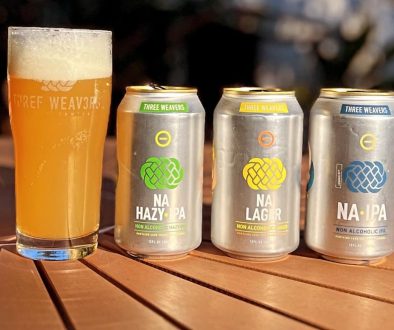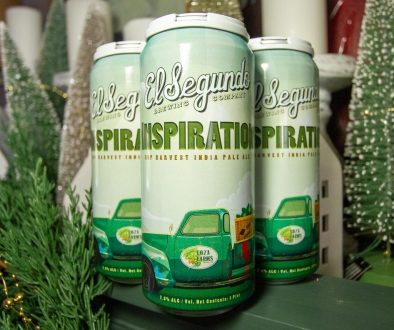Making Spectacular Beer Isn’t Enough Anymore

It is a great time to be a beer enthusiast. Consumers have more high quality options available than ever before. This competitive environment presents challenges for brewers though, it wasn’t that long ago that any brewery making decent beer would quickly build a devoted following. Now, with so many stellar options available, even breweries that make spectacular beer can get lost in the shuffle. Here are a few things that can help a brewery stand out in a saturated market:
Build an awesome taproom: There are huge advantages to the taproom model, direct sales cut out the middle man and increase profit margins while storing and dispensing your own beer gives the brewery optimum control of freshness and quality. Previously a “taproom” could be a small portable bar with a couple draft lines tucked away in the corner of a warehouse. Today, many modern taprooms rival the best bars in a given city, with exceptional service, schedules of events, plus décor and atmosphere that help establish the brewery’s brand. I know many taprooms that are so much fun to visit it allowed the breweries to build a following while they ironed out some initial issues with their beer.
Hire good people: Every single person who works at a brewery and interacts with customers on any level plays a crucial role in building the business. Every bartender and marketing representative should have an in-depth knowledge of the beer and be able to relate that knowledge and make recommendations to hardcore beer geeks and newbies alike. When these employees are working at the taproom or representing a brewery at tastings or events they have the opportunity to build relationships with potential customers or, with poor service, to drive them away. I have heard way too many stories of people who refuse to buy beer from a particular brand after negative experiences with rude or inappropriate employees at taprooms or events.
Hold unique events: Trivia nights can be fun, but tons of local bars hold these types of events on a regular basis. Holding unique events can help a introduce a brewery to very different types of potential customers. I’ve seen local spots hold academic lectures, political fundraisers, speed dating nights and skee-ball tournaments. Each of these events attract people who wouldn’t necessarily visit the brewery otherwise, and many become repeat or even regular customers. If a customer creates a good memory while sampling your beer they will build an association between the memory and the beer and be much more likely to seek out that beer in the future.
Market in non-traditional ways: Beer festivals and tastings at bottle shops are important, but not the most imaginative marketing strategy. If you make good beer the best thing to do is make sure as many people as possible get a chance to try it, every taste could lead to a devoted customer. I’ve seen craft beer reps set up at sporting events, charity fundraisers and other community-centric gatherings. These events draw a very different crowd compared to a beer festival and help build a connection with the local community.
Build a strong brand: I was talking to a friend recently who likes quality beer but is far from a beer geek. He mentioned a beer he had tried and enjoyed, and he sheepishly admitted that the only reason he bought it was that the label looked cool. When customers are faced with hundreds of different options at a bottle shop, branding is extremely important. Well designed labels and catchy names will cause new people to try the beer, and if it’s good they will probably come back for more. Consistency across different beers is also paramount, make sure it’s clear that each release is part of the same brand.
That means no sexist/puerile beer names or artwork: I really wish this wasn’t an issue, but not a week goes by without a brewery releasing a beer with a completely inappropriate name or label artwork. If you can’t build a strong brand without resorting to innuendo or sexism, please hire someone to help. The adage that there is no bad publicity is false in this case, customers have so many options that it’s really easy to boycott breweries with offensive labels.
Have active social media accounts: Social media gives a brewery an amazing opportunity to directly interact with their customers, and to receive feedback on their beers. There are many breweries who do a stellar job on social media, their feeds are full of beautiful pictures of the brewery and the beer, they regularly share information on releases and events, and they respond well to both praise and criticism. Others do a comically poor job, either by lashing out at any criticism, giving bot-like answers to every single mention (you really want to give a “cheers” to that 1-star Untappd rating?), or they have no social media presence at all. Social media is a powerful and relatively easy to use marketing tool, the breweries that utilize it best are adding tremendous value to their brand, while the breweries who don’t are missing out.
Quality control: Designing and brewing a great beer isn’t easy but doing it consistently from batch to batch is the real challenge many professional brewers face. I can think of a few breweries that I shy away from because I’ve had more than one beer that was ruined by carbonation issues, oxidiation or obvious off-flavors. Every batch of sub-optimal beer that hits distribution can permanently alienate customers. I know that many high-end breweries are very quick to dump an entire batch of beer if it doesn’t meet their high standards. Proper quality control costs money and time, things that are in short supply at a small brewery, but not doing it can cost much more. Please don’t try and pass off that infected beer as a “wild ale”.
Make amazing beer: I mentioned at the start that brewing amazing beer isn’t enough to stand out in this competitive marketplace, but it is still by far the most important factor in a brewery’s success. All of the suggestions mentioned above won’t mean a thing if the beer is mediocre. With many more breweries set to open this year the market is only getting more crowded, and hopefully it will lead to a plethora of delicious, innovative and readily available beers to people in every market!




October 2, 2018 @ 1:56 pm
A great distributor and location are key also.
March 2, 2018 @ 9:52 am
No mention of having a great relationship with your wholesaler and knows how to work with their sometimes large sales team? No mention of packaging that clearly communicates to the consumer what the beer actually is? How about a tap handle that differentiates itself from the rest or do you want to just sell your beer at your taproom?
I agree with many of the above suggestions with hiring good people being the most important. No mention of competitive pricing in a saturated market? The article is only half of what you need but it is well written.